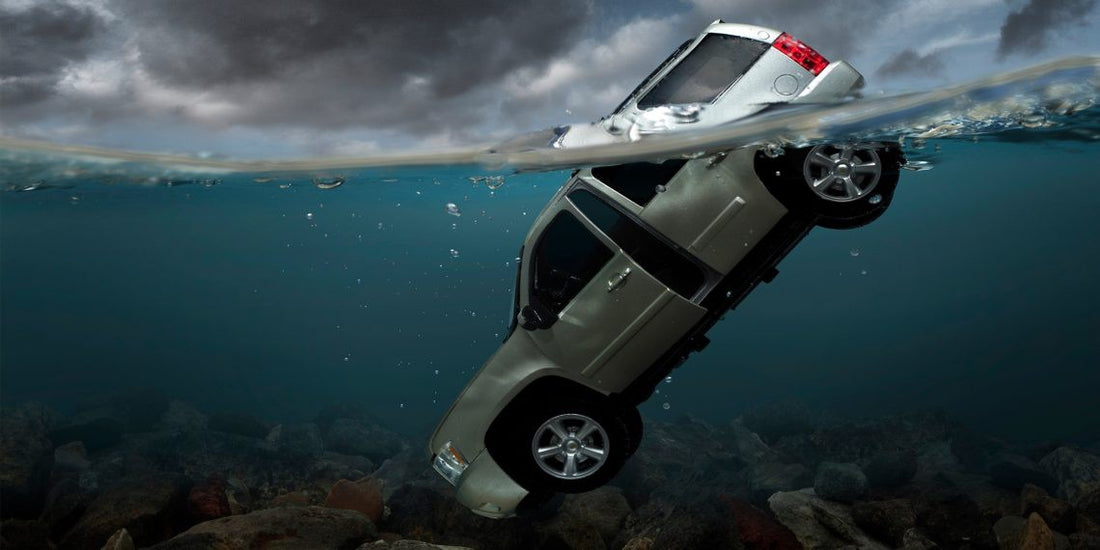
How to Escape a Sinking Car: Step-by-StepGuide
Finding yourself trapped in a sinking car is a terrifying scenario, but knowing what to do can make all the difference. Every second counts when water starts flooding your vehicle, and staying calm and acting decisively can save your life.
In this guide, you’ll learn the essential steps to escape a sinking car safely and efficiently.
Why Acting Quickly Is Critical
When a car hits water, it doesn’t sink immediately. Typically, you’ll have a short window—30 seconds to a few minutes—before the vehicle is fully submerged. During this time, the pressure difference between the inside and outside of the car increases, making the doors nearly impossible to open.
This is why preparation and understanding the process are vital.

Key Steps to Escape a Sinking Car
1. Stay Calm and Assess the Situation
Panic is your worst enemy in emergencies. Take a deep breath and focus on what needs to be done. Avoid wasting time calling for help until you’re out of the vehicle, as escaping should be your top priority.
2. Unbuckle Your Seatbelt
Your first action should be to unfasten your seatbelt. Many people forget this in the chaos, and a secured seatbelt can trap you in place. Ensure passengers, especially children, unbuckle theirs as well.
3. Forget the Doors—Use the Windows
Opening the doors is extremely difficult due to water pressure. Instead, aim to escape through the windows.
- If Your Window Opens Manually: Roll it down immediately while the car is still afloat. Once the water reaches the windows, manual rolling becomes nearly impossible.
- If Your Window Is Electric: Act quickly to lower it before water damages the electrical system.

4. Break the Window If Necessary
If the windows won’t open, you’ll need to break them. Aim for the edges or corners of the glass, as they are more vulnerable than the centre.
- Use a window-breaking tool if you have one. Keep it accessible, like on your keychain or in your glove compartment.
- In the absence of a tool, remove a headrest and use the metal prongs to strike the glass.
5. Help Passengers Escape
Once your exit is clear, assist passengers in getting out. Start with children or those who may need additional help. Remember, every second counts, so move quickly.
6. Exit Feet First and Swim to Safety
Push yourself out of the window feet first. This allows you to kick off from the car and propel yourself toward the surface. Swim in the direction of rising bubbles if disoriented.
What to Do After Escaping
Once you’ve exited the vehicle:
- Swim to the surface and away from the sinking car to avoid being pulled down by the water current.
- Call emergency services as soon as you’re safe to alert them to the situation.
- Seek medical attention for yourself and others, especially if you’ve been exposed to cold water or sustained injuries.

Tips to Be Better Prepared
Preparation is key to surviving such emergencies. Here’s how you can stay ready:
Keep an Escape Tool Handy
Invest in a window-breaking tool that also doubles as a seatbelt cutter. Popular options are small, lightweight, and designed to attach to your keychain or fit in your car.
Learn Your Vehicle's Mechanisms
Familiarize yourself with your car’s windows and door locks. Knowing how your vehicle operates can save valuable seconds in an emergency.
Practice Water Safety with Passengers
Teach your family, especially children, how to escape a sinking car. Conduct drills or discuss what to do in a calm, controlled environment to reinforce the steps.
Secure Loose Items
Ensure heavy or sharp objects in the car are secured, as they can become dangerous projectiles during a crash or sudden impact.
The Golden Rule: Act Fast
The most important takeaway is to act quickly. Every second you hesitate increases the risk of the car becoming fully submerged, making escape exponentially harder.

Final Thoughts
Escaping a sinking car is one of the most harrowing experiences anyone can face. But with the right knowledge and tools, you can significantly increase your chances of survival. Memorize these steps, keep a window-breaking tool in your vehicle, and always be aware of your surroundings when driving near water.
Remember, preparation saves lives. Share this guide with friends and family to ensure they’re equipped with the knowledge to act in an emergency.




